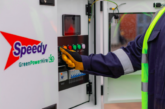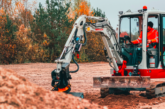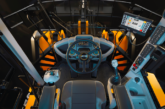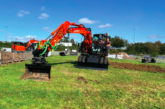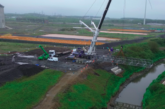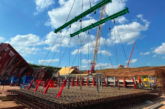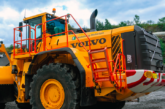Horsham-based T&M Bowser Solutions’ (T&M) entire fleet of dust suppression tankers has been deployed, on the cusp of the UK summer.
The manufacturer of custom-built bowsers (tankers) has 32 4×4 10,000-litre capacity vacuum tankers and 46 4×2 tankers, ranging in capacity from 3,000 to 10,000 litres. All 78 vehicles are currently out on various construction, highways and infrastructure projects.
As the UK’s Health & Safety Executive (HSE) warns, construction dust is not just a nuisance; it is a real risk to people’s lungs. The Control of Substances Hazardous to Health (COSHH) regulations says industry must protect against the risks from hazardous construction dusts.
Regularly breathing dust can cause diseases like lung cancer, asthma, chronic obstructive pulmonary disease (COPD) and silicosis. These diseases cause permanent disability and even early death. Construction workers, especially, have a high risk of developing these diseases because many common tasks in the sector can create high dust levels. Over 500 construction workers are believed to die from exposure to silica dust every year.
Terry Beasley, managing director at T&M, said: “Any project that has earthworks going on must be aware of the potential for dust gathering on both the site area and haulage routes into them. As soon as the weather warms up, the ground temperature rises and it dries out quickly. Dust particles can be very small—not always visible—and as tools are used, vehicles travel or as the wind picks up, this dust can circulate in the air that workers are breathing.”
Trunk road
T&M’s fleet of 4x4s can be used to supply water to machinery and tanks, while many have spent the winter months sucking up rainfall from sites to prevent them from flooding. However, the priority is now very much on dust suppression. The vehicles suck water from holding ponds through a pipe with a heavy-duty strainer on the end to prevent stones being drawn up with liquid. Beasley quips that the outlet looks like the end of an elephant’s trunk. These versatile vehicles can also remove summer rainfall and deposit it back into holding pools.
The 4x2s, meanwhile, are filled from a hydrant or static tanks on site. They are especially useful on motorway or urban projects where tractors or heavier duty vehicles can’t be used. T&M can combine various capacities in the smaller range to suit the particular requirements of the site. The entire fleet is cab-operated while in motion, further enhancing safety and efficiency.
Beasley said: “Both our 4×4 and 4×2 fleets can be used full-time on larger projects, as the risk of a site being shut down due to a lack of dust control is too high given the costs incurred. Potential exposure varies from swallowing to eye and skin irritation. As COSHH says, you, as the employer, are responsible for taking effective measures to control exposure and protect health. It adds that some diseases take years to develop; if exposure is high because the task has always been done that way, maybe it’s time for a change. We work with our partners to ensure that they can carry on working safely even in the driest of weather periods.”


